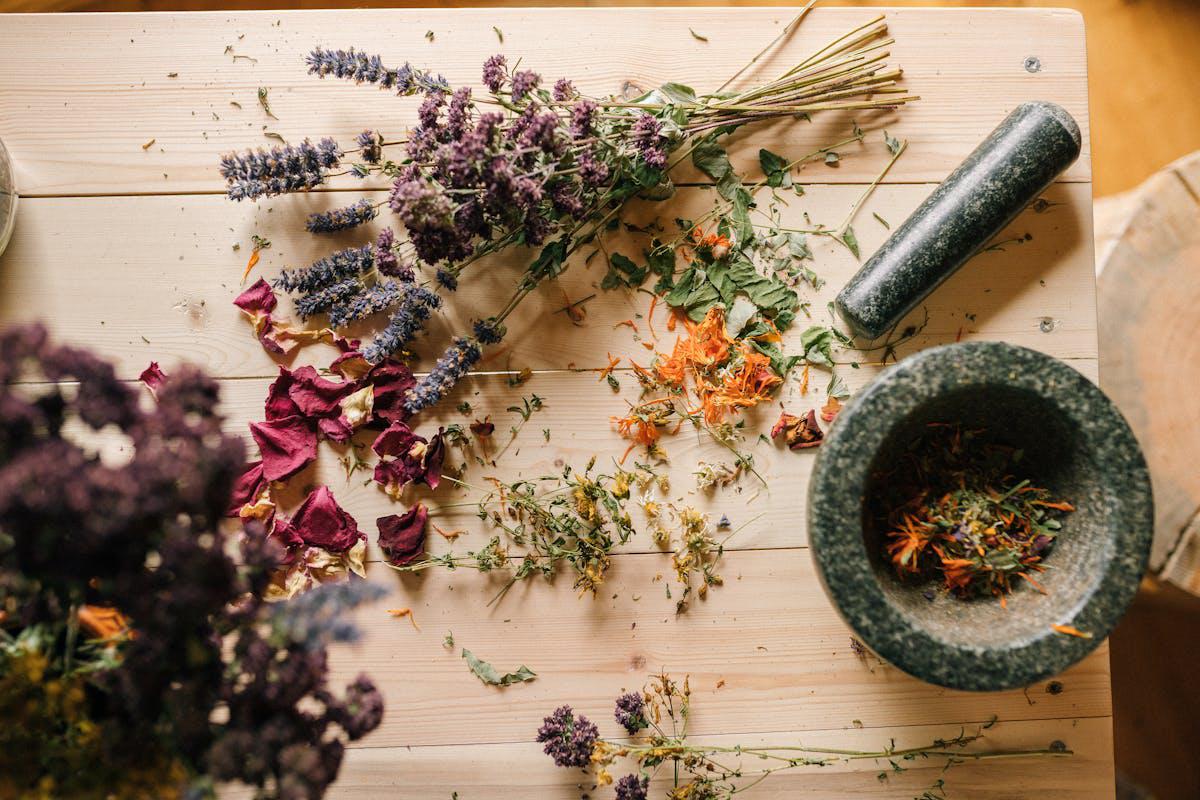
By Maurice Wells, DAcHM, L.Ac., Dipl.Ac.
Tea is more than a beverage in Traditional Chinese Medicine (TCM)—it is a living tradition, a method of healing, and a daily ritual that supports physical, emotional, and spiritual balance. Known in Chinese as “Cha Liao Fa (茶疗法)” or “tea therapy,” this ancient practice uses medicinal herbs steeped in hot water to correct imbalances, tonify organ systems, and harmonize the body with the seasons.
While modern tea culture focuses on flavor and relaxation, TCM sees tea as a delivery method for personalized herbal medicine—chosen based on an individual's constitution, symptoms, and pattern diagnosis. This blog explores the foundational principles of tea therapy, its practical uses, and its relevance in modern integrative wellness.
Tea therapy in TCM is the therapeutic use of herbal teas—ranging from simple one-herb infusions to complex multi-herb formulas—to restore the body's internal harmony. Unlike conventional tea made solely from Camellia sinensis (green, black, oolong, etc.), TCM tea therapy includes a wide array of plant parts such as flowers, roots, seeds, barks, and fruits.
In TCM, every herb is categorized according to its:
For instance, chrysanthemum (Ju Hua) is cool and light, ideal for clearing heat from the Liver and calming red, irritated eyes. Ginger (Sheng Jiang) is warm and dispersing, often used to harmonize digestion and expel external cold.
Rather than treating isolated symptoms, TCM focuses on pattern differentiation—a diagnostic approach that identifies the root cause of imbalance. A tea prescribed for headaches in one patient might differ completely from that for another, depending on whether the pattern involves Wind-Heat, Liver Yang Rising, or Blood Deficiency.
The roots of tea therapy trace back over 2,000 years. In the Shennong Bencao Jing (The Divine Farmer's Materia Medica Classic), one of the earliest Chinese herbals, tea was listed as a medicinal plant used to "brighten the eyes, eliminate tiredness, and improve digestion." Throughout the Tang and Song dynasties, tea culture flourished, and scholar-physicians began integrating herbal decoctions into everyday consumption.
During this time, health-promoting herbal teas became popular among scholars, monks, and the upper class. Blends were customized seasonally and constitutionally—a tradition that continues in modern TCM clinics and wellness centers today.
These are commonly used in spring and summer or during acute conditions characterized by inflammation, fever, or skin eruptions.
Key Herbs: Chrysanthemum (Ju Hua), Honeysuckle flower (Jin Yin Hua), Dandelion leaf (Pu Gong Ying), Lotus leaf (He Ye)
Indications: Sore throat, acne, red eyes, irritability, urinary infections
These support Qi, Yang, or Blood—especially for those recovering from illness or experiencing chronic fatigue and coldness.
Key Herbs: Ginseng (Ren Shen), Astragalus (Huang Qi), Goji berry (Gou Qi Zi), Cinnamon bark (Rou Gui), Codonopsis (Dang Shen)
Indications: Fatigue, poor immunity, cold limbs, low libido, weakness
Ideal for autumn or for individuals with dry skin, dry cough, or heat signs without inflammation. They replenish fluids and calm internal heat.
Key Herbs: American ginseng (Xi Yang Shen), Ophiopogon (Mai Men Dong), Lily bulb (Bai He), Mulberry leaf (Sang Ye)
Indications: Night sweats, dry throat, menopausal symptoms, restlessness
The Spleen in TCM governs digestion and energy. These teas help resolve Dampness, promote appetite, and regulate bowel movements.
Key Herbs: Tangerine peel (Chen Pi), Atractylodes (Bai Zhu), Poria (Fu Ling), Hawthorn berry (Shan Zha), Job’s tears (Yi Yi Ren)
Indications: Bloating, fatigue after meals, loose stool, weight gain
These address stress, anxiety, and sleep disorders by calming the Heart and Liver and anchoring the Shen (spirit).
Key Herbs: Jujube seed (Suan Zao Ren), Albizia flower (He Huan Hua), Longan fruit (Long Yan Rou), Lotus seed (Lian Zi)
Indications: Insomnia, anxiety, overthinking, irritability, heart palpitations
TCM emphasizes living in harmony with the seasons. Tea therapy supports this by selecting herbs that align with seasonal transitions:
This seasonal approach aligns with TCM’s philosophy of prevention through adaptation—a key reason tea therapy remains popular today (Bensky et al., 2004).
The preparation method affects potency and absorption:
A typical therapeutic tea might use 6–12 grams of herb per cup, taken 1–3 times daily depending on the condition and constitution.
In a time when people are overwhelmed by pharmaceuticals, side effects, and chronic disease, TCM tea therapy offers a gentle, holistic, and personalized approach to health care. It is especially appealing in integrative settings, where patients seek to improve immunity, reduce stress, and support digestive and metabolic health.
Modern clinics often use tea therapy to:
Clinical research also supports the efficacy of many herbs used in TCM teas. For example, Astragalus membranaceus (Huang Qi) has shown immunomodulating and anti-inflammatory effects in modern studies (Chen & Chen, 2004).
Although herbal teas are natural, they are not always benign. Some herbs may:
Always consult a licensed herbalist or TCM practitioner for proper diagnosis and formulation. Self-prescribing based on symptoms without understanding the pattern can worsen imbalances.
Traditional Chinese Medicine Tea Therapy is more than a remedy—it’s a ritual that connects us to ancient wisdom, our environment, and our body’s inner rhythms. Whether you’re managing chronic fatigue, seasonal allergies, emotional stress, or simply seeking better balance, there is likely a tea tailored for you.
Let your cup become your clinic—filled with plants that have nourished humanity for thousands of years.
References